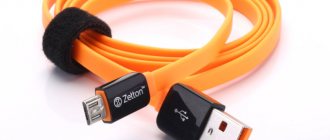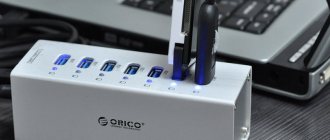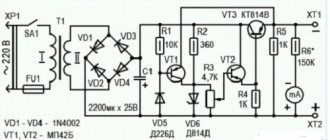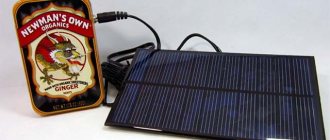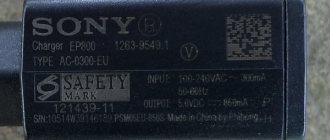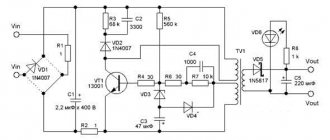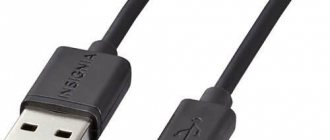If you've used a wireless charger, you know:
- It is never wireless. Anyway, the wire from the charger goes to the outlet.
- Putting your phone on the charger correctly is quite a challenge.
- A phone with a regular wired charger can be plugged into an outlet and taken to the crib. And on a wireless one, wait until it charges.
But if you put aside all the inconveniences, of course, it looks magical. Let's figure out how this works from a physics point of view.
Wireless phone charging: what is it?
Wireless charging looks like a small stand on which you place your phone. As for style and appearance, there are few complaints about these gadgets. Some devices work as power banks, that is, they do not require a wire connection at all. You just need to charge them, after which the wireless charging function becomes available anywhere.
Now this function has been standardized, so it is being developed and implemented quite quickly. The standard is called Qi, which is read as “Qi” - “energy of the Universe” in Chinese culture. The technology already works on many models, including iPhones from version 8, Samsung, LG and other brands.
By the way, we talked about which smartphones support wireless charging in another article.
If the phone does not have a built-in Qi module, then there is still a way to use wireless charging. You can buy and install a thin plate under the gadget cover. It simply plugs into a USB port.
Standards
Charging Xiaomi Qi Wireless charger. Source: Reddit.com
Today, the network still talks about four wireless charging standards: Qi, PMA, Rezence, AirFuel. Moreover, the latter was actually formed after the merger of companies that were engaged in the second and third.
AirFuel works on the principle of electromagnetic resonance - it is the future of wireless charging that has not yet arrived. It increases the energy transmission range by up to 40–50 mm, but there are no commercial devices that support the standard yet.
It turns out that the only charging standard you need to look at is . This is a universal solution supported by Apple, Samsung, Xiaomi and other companies. There are still remnants of PMA in stores and it is best to avoid them.
Principle of operation
The operating principle of wireless phone charging is electromagnetic induction. Therefore, sometimes these gadgets are called “magnetic” or “inductive”. In order for it to work, two coils are required: one in the charger, and the other in the smartphone. When current is applied to the first, a magnetic field appears. If the second coil is close enough, the magnetic field causes an alternating current to flow through it, which is then converted to DC voltage and charges the phone.
The way the wireless charger works determines the connection process: the gadget must be placed directly on the platform. Other technologies that increase distance are constantly being announced, but have not yet become part of the market.
But it's not that simple
For wireless charging to work effectively, the charging coils and the phone coils need to be as close to each other as possible. Ideally, if their centers coincide, then the losses will be minimal. But we often see how phones are simply placed on any place on the site, and charging still proceeds as expected.
To make this possible, manufacturers make several coils on site. For example, you can place several coils next to each other, and put a few more on top in the gaps. Then the phone will almost always lie above one of the coils and will be charged.
In order for the charger to understand which coil needs to be used, it supplies current to each one in turn and thus determines which coil the phone is closest to.
Chargers also differ in power - for example, there are chargers for 5, 10 and 20 watts. In order for the charger to understand what power your phone is designed for and whether this charger was even suitable for the phone, it uses the same magnetic field to exchange data with the phone. If everything is in order, the charge goes on, if not, then everything turns off or charging proceeds at minimum power.
Pros and cons of wireless phone charging
There are many myths and some negative experiences among people who have used the technology. When you come across articles like this, the first thing to pay attention to is the date. The standard is evolving and many bugs are being corrected. Second, the experience of technology depends on expectations. Wireless charging technology is not magic, but in certain scenarios it is extremely convenient to use.
I highlighted the following advantages of the technology:
- Appearance. No wires and a nice design that you can choose when purchasing.
- There is no need to carry a wire with you. There was often a situation where I forgot the wire at work. If you don't have a spare on hand, this can be a problem. A wireless charging device solves this problem.
- Increases the resource of the USB port, as well as the service life of the USB cable. Daily use causes them to deteriorate. With a wireless device, their service life increases.
- Increased battery life. In new versions, there is a feedback connection between the smartphone battery and the charger. Depending on the percentage, the gadget varies the supplied voltage, and at a level of 100% it stops working. Thanks to this, the battery will last longer.
Disadvantages of the current technology:
- The radius of application is several centimeters. Now this is precisely the principle of the technology. Therefore, the gadget must lie on the platform and cannot be used at this time. However, using a smartphone in this way reduces battery life, so this minus can also be called a plus.
- Long charging time. Such devices operate with a relatively low efficiency - about 80%. In fact, the gadget takes two or three times longer to charge. Therefore, it is better to charge your phone in this way at night or while working, but not as a way to recharge it on the go.
- Metal cases will not allow you to charge your smartphone this way. We'll have to take them off. Plastic, glass or wood do not affect the process.
- Interference with other devices. As it looks at the moment, they are sometimes noticeable for some devices near the charging station.
- If you use a Qi pad on a smartphone, it will occupy the USB port.
There are also several myths that are sometimes listed among the cons. But this is nothing more than speculation:
- Harmful to health. In fact, gadgets use non-ionizing radiation. It does not interact with the human body. Moreover, it completely disintegrates 20-40 cm from the source.
- Damage to the gadget. The fact is that over time, the battery performs worse due to frequent charging, and also because it is not charged to 100%. This does not depend on the type of charger, but only on the user’s actions.
Is it safe for health?
In terms of their operating algorithm, such stations are similar to induction cookers. They are distinguished by the fact that the radiation they produce is so low that it is considered to be of any serious importance to human health. But devices operating on the basis of a magnetic field can pose a real danger to the category of people using pacemakers.
It is worth noting that the radiation from new-fangled chargers is noticeable only at the shortest distance - for example, a cell phone stops charging when it is 5 cm from the docking station. Therefore, for people who are overly concerned about their own health, it can be advised not to place the device on the nightstand near the bed.
Common problems and their solutions
So, if wireless charging does not work for us, even after a reboot, check the following parameters:
- Qi compatible. If it is not there, you need to buy and install a thin charging pad in your smartphone;
- Case (metal or shockproof) – it must be removed;
- Sometimes the process depends on the position of the gadget on the platform - in fact, on how the platform is designed. It is necessary to study its instructions;
- Smartphone manufacturers write that the function may not work well due to some application or because the screen saver is turned off. You may need to reset your phone to factory settings, or consult support.
Magnetic holders
Pitaka MagMount Qi car charger. Source: equipmentworld.com
Even a tiny metal element that ends up between the charging station and the smartphone can become an obstacle to electromagnetic induction. It could even be a small plate that is used for a magnetic holder in a car.
Such plates are usually glued to a smartphone, placed under a case, or molded directly onto it. After this, you can forget about wireless charging: you will have to choose - either a convenient magnetic holder in the car, or charging without tangling cables.
The only exception will be special magnetic holders with built-in charging - such, for example, are produced by Pitaca. Metal elements for them are built into cases from the same manufacturer so as not to interfere with electromagnetic induction.
Tips for use
As a conclusion, here are the most important tips:
- Try to charge your smartphone fully and do not use it while charging.
- Do not use metal phone cases.
- Expect long wireless charging times. Therefore, if you need to charge your smartphone quickly, use a wire.
For me, the way the phone charges wirelessly is just perfect. I leave the gadget overnight and pick it up in the morning at 100%. It runs out of charge within a day, and then I repeat the process. In this usage scenario, the service life of the battery and USB port is significantly extended. I am extremely pleased with this technology and look forward to its development.
I will also help you choose a wireless charger using a short video review.
How to use?
Top-end smartphones produced nowadays are equipped with a wireless charge replenishment function, although for now this is the prerogative of premium smartphones. For various gadgets bearing the Qi designation, this marking implies compatibility with a wireless charger. You just need to place a discharged smartphone in the center of the panel (or in a place specially designated by the manufacturer), and its energy supply will immediately begin to replenish. And upon reaching 100% value, replenishing the charge will automatically stop. If the process of restoring the charge has not started, this means that the case on the gadget is too thick, or that it does not support this format of operation.
In addition, in addition to docking station versions for use at home or in the office, there are also platforms that do not have wires and are designed for use in a car. Of course, such a station should be 12V. For greater convenience, you can use a station for several devices, although its cost will be slightly higher than that of one that charges a single gadget. Such docking stations have several contact pads at once - so far stations with two and three pads have been presented, but technology continues to develop, so we should expect more. To determine what wireless chargers are and understand which one you should choose, you can refer to the article “The best portable chargers for smartphones.”
The charging platform must be connected to the power supply, which can be a regular 220 V outlet or a computer USB port. In addition to smartphones, other devices equipped with a Qi receiver can also replenish the battery charge using such devices. Such gadgets include tablets, smart watches, power banks and other gadgets.
The power level is indicated by the manufacturer on the device case, its packaging and the manufacturer’s website. With enough input power, the platform will be able to produce the maximum output. In addition to the main characteristics of the purchased device, the owner of the gadget needs to know what the power of the charging platform is to which it can be connected.
Materials
Mophie Wireless Charging Base. Source: mophie.com
Inexpensive wireless chargers are made of cheap glossy plastic. Firstly, it quickly wears out during constant interaction with the smartphone. Secondly, it is from here that devices most often move out.
Good wireless chargers like the Mophie Wireless Charging Base are made of matte plastic with rubber elements. The smartphone does not move from such stations, they are almost scratch-resistant and look good in any interior.
There are premium wireless chargers that can be constructed with fabric covering and leather. For example, Native Union Drop Wireless Charger looks really good, but it can’t boast of technical characteristics.
Manufacturer
Native Union Drop Wireless Charger Station. Source: 9to5Mac.com
AliExpress is littered with Qi wireless chargers from a variety of manufacturers. Most of them are Chinese fly-by-nights who do not monitor the quality of their devices. They are inexpensive, but you buy them at your own risk.
During the transfer of energy through magnetic induction, enough heat is generated to destroy the internal components of a low-quality charging station. Further consequences range from its breakdown to a fire.
It is best to use wireless chargers from trusted brands that are well-known: Spigen, Anker, Momax, Samsung, Belkin, Mophie, Nillkin, Baseus, Native Union, Xiaomi (ZMI). You can buy a good model within 2–10 thousand rubles.
output power
Charging ZMI WTX10 Wireless Charger. Source: aliexpress.com
First you need to figure out how much electromagnetic induction power your smartphone can operate with. This information can usually be found somewhere deep in the technical specifications. It is not promoted by marketers - they just need to indicate Qi support.
For example, the iPhone 8, 8 Plus and X can only handle a maximum of 7.5W (after updating to iOS 12); iPhone XS, XR and XS Max, as well as Galaxy S10 - 10 W. The most powerful wireless charging is supported by Xiaomi Mi 9 - as much as 20 W. This is a record.
Xiaomi Mi Wireless Charger can output up to 10 W, the same story with Baseus Simple Wireless Charger. The ZMI WTX10 Wireless Charger reaches up to 18 W, but the Mophie Wireless Charging Base does not support more than 7.5 W.
Form factor
Double charging Baseus Dual Wireless Charger. Source: amazon.it
Wireless chargers for home and office are usually of two types: tablets and docking stations. The first ones are often scattered in a variety of convenient places: on the bedside table, in the hallway and living room. The second ones are placed on the table near the computer.
"Pills" are usually cheaper. But they have one significant drawback - the smartphone can move out of the station if it receives updates with vibration. In this case, charging will suddenly stop, and this will definitely not be the most pleasant surprise.
After the failure of AirPower, universal charging stations for several devices like the Baseus Dual Wireless Charger are also actively being developed. With this you can simultaneously charge two smartphones at once, but not everyone will need this.

